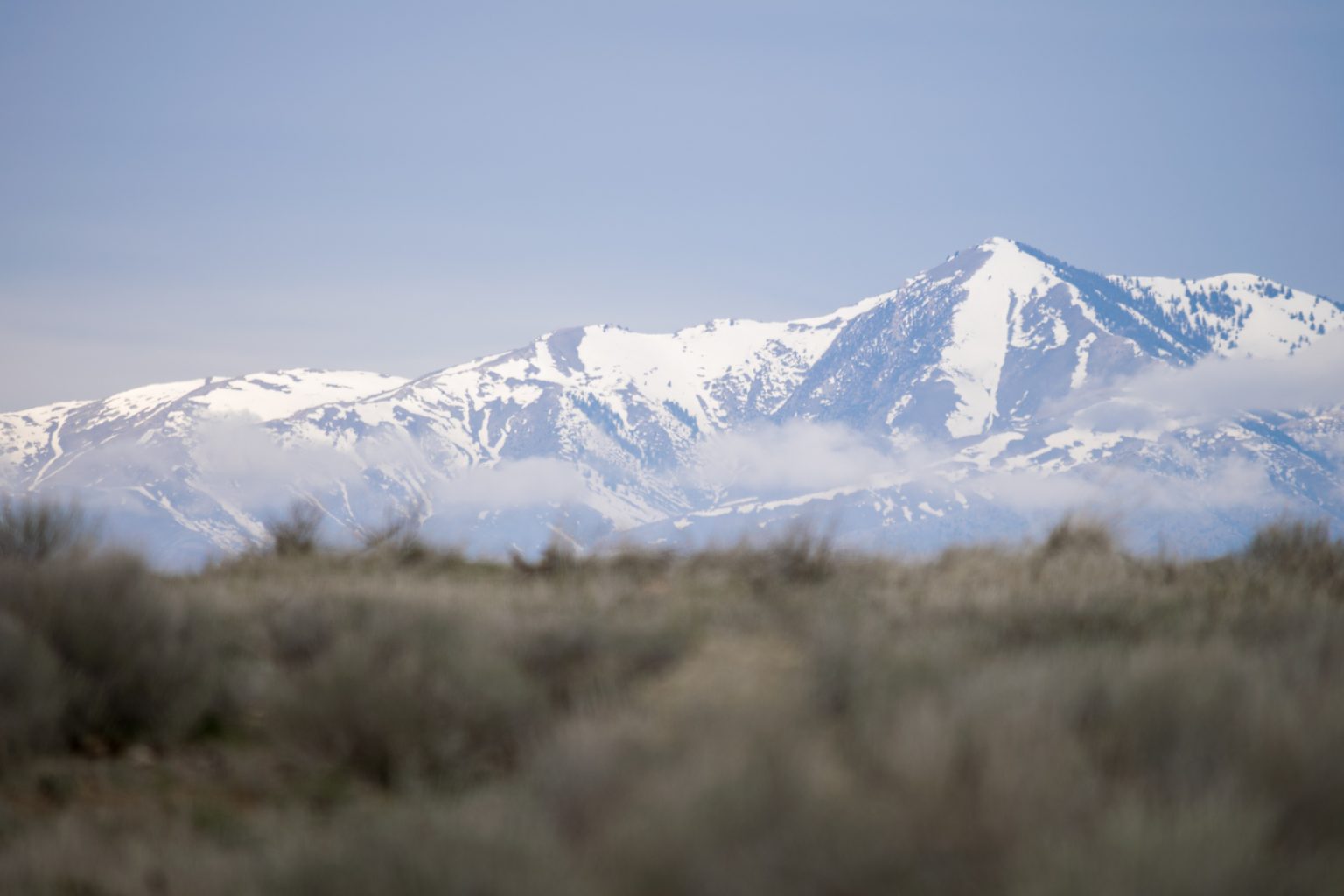Along with nuclear energy and other research at Idaho National Laboratory, another type of research – one focused on plants and animals – is also taking place on INL’s desert Site.
Even as the first dirt was moved at the National Reactor Testing Station in 1949 for the Atomic Energy Commission (AEC), there was recognition that the Site offered unique opportunities to study wildlife and vegetation. Due to a vast expanse of undisturbed ground — roads and buildings make up only 3% of the 890-square-mile Site — INL offers prime habitat.
“I always try to explain that to people and promote that aspect of the Site,” said Bill Doering, program manager at Veolia Nuclear Solutions Federal Services.
Veolia, the company that manages the Environmental Surveillance, Education and Research (ESER) Program for the U.S. Department of Energy (DOE), has a team that includes health physicists, environmental scientists, wildlife biologists, plant ecologists, geographic information system (GIS) specialists, and support staff. It is just one player in the extensive environmental monitoring of the INL Site.
Safe habitat for animals
Since 1970, the National Environmental Policy Act (NEPA) has required all federal agencies to consider environmental impacts of any proposed actions. ESER’s role is to provide expertise and advice to the DOE’s Idaho Operations Office and assess the impacts of DOE’s activities and natural phenomena, such as wildland fires, at the INL Site.
The ESER program conducts midwinter raptor counts, breeding bird surveys, raven nest surveys and bat population surveys. Many vegetation plots are surveyed annually. Others that have been surveyed for many decades are visited every few years. Telemetry studies involving radio collars have been done on elk, pygmy rabbits, coyotes and sage-grouse.
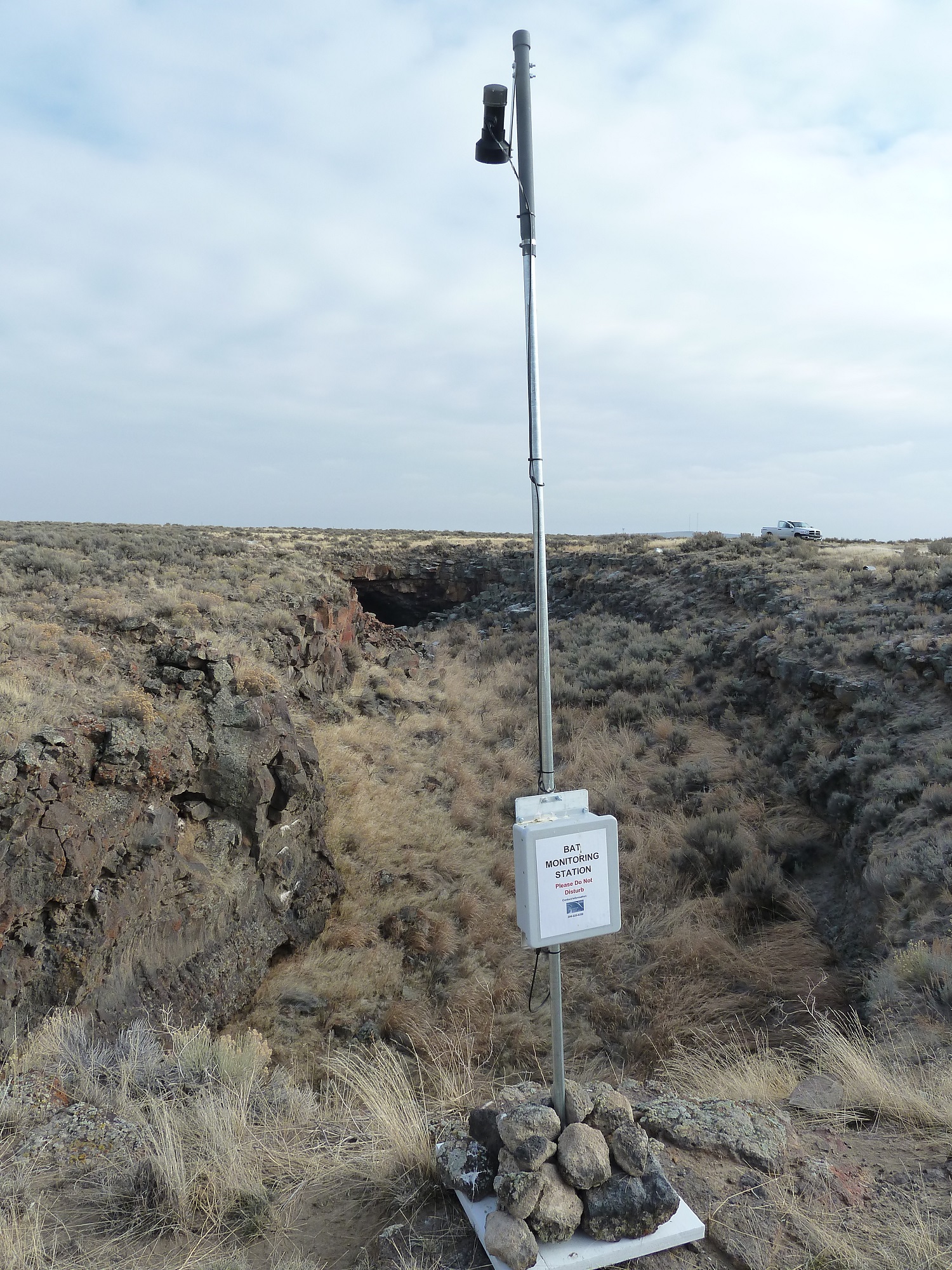
While sage-grouse populations in the American West have declined by more than half in the past 100 years due to habitat loss – large chunks of a range that once stretched from British Columbia to Nebraska to New Mexico are now gone – the INL Site is still a place the birds call home. Though fires periodically burn across parts of the Site and sagebrush takes decades to recover, the INL Site still holds large tracts of undisturbed sagebrush habitat.
DOE has funded sage-grouse monitoring at INL since 1995. In addition to radio collaring birds to gather data on habitat use, nesting behavior and mortality, biologists perform lek surveys every spring to get rough and relative population counts.
Leks are places where males gather during the mating season to strut and display, in hopes of attracting attention from females. Shortly before dawn they gather in open areas — clearings and road shoulders — and go into their routines, fanning out tail feathers, inflating air sacs on their chests and emitting a popping sound as they slap the air sacs together.
In 2014, DOE-Idaho entered into a Candidate Conservation Agreement for Greater Sage-grouse with the U.S. Fish and Wildlife Service (USFWS). The voluntary agreement established a Sage-Grouse Conservation Area. To guard against population declines, it includes population and habitat triggers that, if tripped by declining male lek attendance or loss of sagebrush habitat, would initiate an automatic response by both the USFWS and DOE-Idaho.
Doering’s particular field of research is the migration and hibernation habits of bats, which abound in the lava caves of the eastern Snake River Plain. The INL Site is a proven pathway for two bat species as they migrate southward in the late summer and early fall. Every other year, the ESER Program conducts a count of hibernating bats in select INL Site caves and routinely monitors bat populations using acoustical monitors set up at cave mouths that switch on at dusk and turn off at dawn.
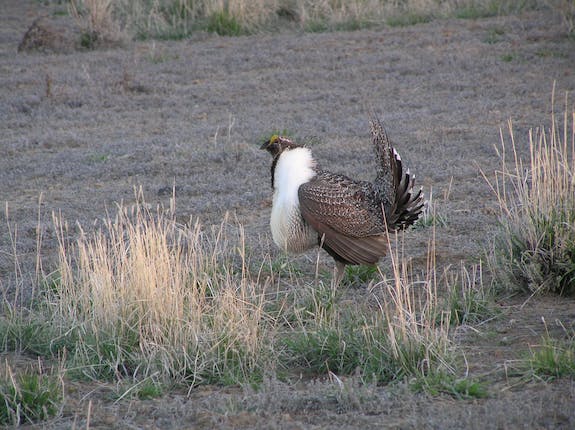
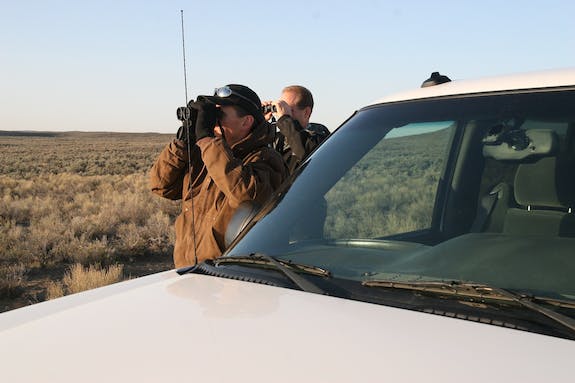
Doering says he’s grateful the caves on INL land have no visitors. Millions of bats in North America have died from white nose syndrome, a fungus that showed up in the Eastern United State in 2006 and has since made its way west, to Washington, Wyoming, North Dakota and, most recently, California. The fungus may be spread by human visitors to caves, who bring it on their clothes and shoes. “All this security equipment here has the advantage of keeping hibernation habitat safe, at least for now,” Doering said.
Multiple agencies monitoring air, water, radiation
Environmental monitoring at INL can trace its roots back to the same time the AEC was getting ready to build its first experimental reactors. The present-day National Oceanic and Atmospheric Administration established a Weather Bureau Research Station in 1948 to characterize weather conditions at AEC’s National Reactor Testing Station. The U.S. Geological Survey established a project office for scientific monitoring and research and published its first paper in 1949, “Memorandum report on pumping test of Arco Reactor-Testing Station production test well No. 1, with recommendations for well-finishing.” Through the end of 2018, the USGS Idaho Water Science Center bibliography lists the 355 studies completed since then.
In 1950, AEC set aside 100 long-term plots for studying the potential effects of its work on native vegetation. Those plots have been surveyed about every five to seven years. In 1975, the Site was designated a National Environmental Research Park, an official setting for land and facility managers to support natural resource management. It maintains several regionally and nationally important long-term ecological datasets, including one of the largest datasets on sagebrush steppe vegetation anywhere.
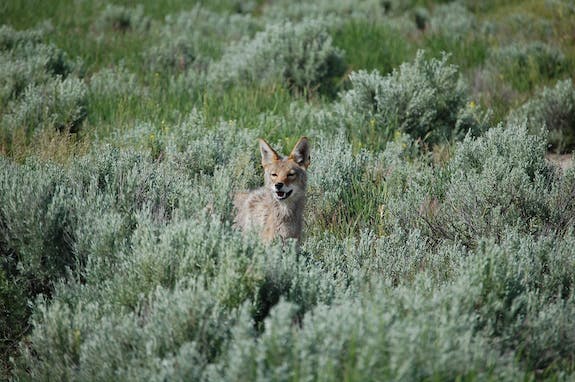
Environmental monitoring activities are conducted by a multi-disciplinary team of contractors and federal personnel. More than 2,000 samples are collected each year from over 9,000 square miles, with the majority collected by BEA, Veolia and USGS. These include air, water, agricultural products, game animals, and soil. Analysis of samples is performed by the federal and commercial laboratories, and by the Idaho State University Environmental Assessment Laboratory.
The Idaho DEQ’s INL Oversight Program performs independent verification of INL’s environmental monitoring through its extensive monitoring network to evaluate the effects of the INL on public health and the environment. Air, water, soil, milk and external radiation samples are taken at various locations.
To ensure objectivity, environmental samples are sent to off-site independent labs in South Bend, Indiana; Fort Collins, Colorado; Charleston, South Carolina; and Dallas, Texas. Each of these laboratories undergoes independent audits and performance testing.
“We know the environmental regulations,” said Scott Lee, INL’s Regulatory & Monitoring Services manager since December 2009. “There are 100 changes annually, and it’s our job to stay up on them.”
“We are an open book,” Lee said. “Are drinking water sources safe to drink? Yes. Is the air safe to breathe? Yes. We have data from Twin Falls all the way to Jackson, Wyoming.”
Every Site facility, from the Advanced Test Reactor (ATR) to Specific Manufacturing Capability (SMC) to Materials & Fuels Complex (MFC), has its own drinking water and wastewater systems. “It’s a lot like a little city,” said Brad Andersen, who monitors the nine drinking water systems spread out over the Site. The drinking water monitoring results for each of the INL facilities are available online with DEQ, and also available on INL’s website.
“We’re not just about compliance, but safety,” Andersen said. “It’s not good enough to be as good as regular industry. We have to be better.”

